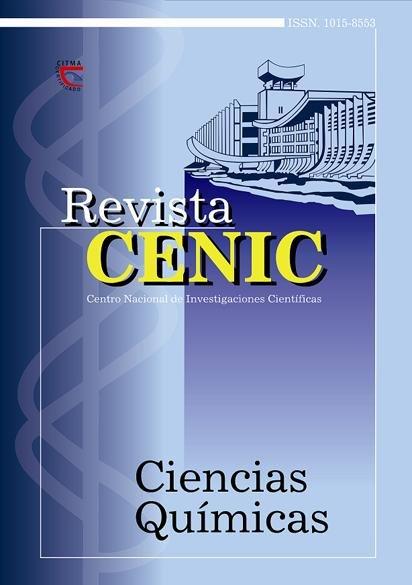Chemical-physical aspects of sunflower oil ozonated
Abstract
The knowledge of the physical chemical properties of ozonized
vegetable oils has a great importance for its characterization and
identification. In this study a correlation of the relative density and viscosity
with the peroxides index of the ozonized sunflower oil was carried out.
Furthermore, main formed oxygenated products was identified after the
ozonization by means of Proton Nuclear Magnetic Resonance (1H-NMR)
signals. The peroxide index and the relative density showed a linear
relationship with a correlation coefficient of 0.999 1 and a determination
coefficient of 99.82 %, while the peroxide index and the viscosity showed
an exponential relationship with a determination coefficient of 98.52 %. For
samples between 230 and 759 mmol-equiv./kg of peroxides index we
obtained values in a range of 0.935 to 0.973 for the relative density, and
values from 0.037 to 0.190 Pa · s for the viscosity. An increase in peroxides
index, in viscosity and in relative density were observed during the
course of ozonization reaction. 1H-NMR technique was used for
identification of oxigenated compounds such as ozonides, hydroperoxides
and aldehydes. These results suggest that physical chemical
properties can provide valuable information about the ozonization degree
of sunflower oil. This study could be the basis of future chemical
researches of ozonized vegetable oils.

Downloads
Published
How to Cite
Issue
Section
License
Copyright (c) 2004 Copyright (c) 2004 Revista CENIC Ciencias Químicas

This work is licensed under a Creative Commons Attribution-NonCommercial-ShareAlike 4.0 International License.
Los autores que publican en esta revista están de acuerdo con los siguientes términos:
Los autores conservan los derechos de autor y garantizan a la revista el derecho de ser la primera publicación del trabajo al igual que licenciado bajo una Creative Commons Atribución-NoComercial-CompartirIgual 4.0 que permite a otros compartir el trabajo con un reconocimiento de la autoría del trabajo y la publicación inicial en esta revista.
Los autores pueden establecer por separado acuerdos adicionales para la distribución no exclusiva de la versión de la obra publicada en la revista (por ejemplo, situarlo en un repositorio institucional o publicarlo en un libro), con un reconocimiento de su publicación inicial en esta revista.
Se permite y se anima a los autores a difundir sus trabajos electrónicamente (por ejemplo, en repositorios institucionales o en su propio sitio web) antes y durante el proceso de envío, ya que puede dar lugar a intercambios productivos, así como a una citación más temprana y mayor de los trabajos publicados (Véase The Effect of Open Access) (en inglés).













